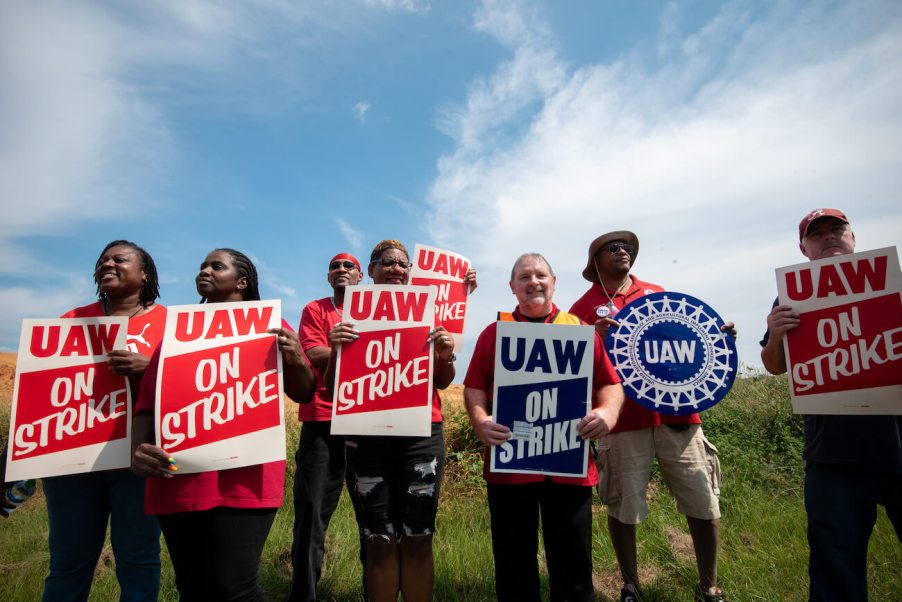
Are Automakers Hoarding Inventory to Prepare for a Potential Strike?
The automotive industry is currently facing a conundrum of opposing dynamics. On the one hand, the supply of new cars appears to be plentiful, with dealerships and lots brimming with inventory. On the other hand, there have been rumblings of United Auto Workers (UAW) labor strikes, which could disrupt production lines at a critical time for automakers. In this article, we will look at the intriguing interplay between high car supply and looming auto strikes and how it might affect the availability of new vehicles in the long run.
A surplus in car supply ahead of auto strikes
The market’s supply of new cars has reached unprecedented heights. This surplus of inventory can be attributed to a variety of factors. The COVID-19 pandemic disrupted the global supply chain, causing temporary production halts and delayed deliveries, resulting in a backlog of cars waiting to be shipped and sold. Furthermore, increased demand for electric vehicles (EVs) has prompted automakers to produce more vehicles in order to capture a larger market share.
For the month of August, the total supply of available unsold new vehicles in the United States surpassed two million units, a level not seen since April 2021. Inventory stood at 2.06 million units at the start of September, up from 1.96 million at the beginning of August, according to Cox Automotive’s analysis of Auto Available Inventory data.
Days of supply stood at 58 at the start of September, about the same level it has been at for most of the year and up 46% from a year ago. Historically, a 60-day supply across the industry was considered normal and ideal.
The Cox Automotive days’ supply is calculated using the daily retail sales rate for the most recent 30-day period ending September 5, when 1.1 million vehicles were sold, a 16% increase over the same period last year. In August, new vehicle sales increased by about 15%. The seasonally adjusted annual rate of sales (SAAR) was 15 million units in August, boosted by higher fleet sales.
The automakers’ calculated gamble
Automakers appear to be walking a tightrope against this backdrop of surging car supply, possibly betting on this oversupply as a buffer to mitigate potential production delays caused by a UAW auto strike. Strikes have historically disrupted automakers’ production schedules, resulting in supply chain bottlenecks and shortages. Automobile manufacturers may be hoping to avoid immediate consequences by amassing a surplus of vehicles.
The ripple effect across the industry
However, relying on an oversupply strategy to navigate labor negotiations comes with its own set of risks. Even if automakers successfully navigate the challenges of a strike without significant production delays, it may have a long-term impact on new car availability.
- Delayed vehicle introductions: Automakers introduce new models or updated versions of existing ones at specific times during the year. If production lines are disrupted due to a strike, the launch of these new vehicles may be delayed, causing a cascading effect on future releases.
- Limited variety: While there may be a surplus of cars on the market currently, this abundance may not extend to all makes and models. Certain niche or less popular vehicles might face shortages, impacting consumer choice and availability.
- Increased prices: The laws of supply and demand suggest that if supply is constrained for an extended period, prices could rise. This could make new cars less affordable for potential buyers.
- Impact on dealerships: Dealerships could face financial strain if they have to hold on to excess inventory for an extended period. This might lead to dealership closures or reduced services, which would further affect consumers.
The market’s abundant supply of new vehicles may provide automakers with a temporary safety net as they navigate potential UAW auto strikes and production delays. This strategy, however, is not without its own set of challenges and risks. Strike disruptions may cause delays in vehicle introductions, limited variety, higher prices, and financial stress for dealerships. The automotive industry will closely monitor the outcome of negotiations between automakers and labor unions, as it has the potential to shape the future landscape of new car availability and consumer choices.


